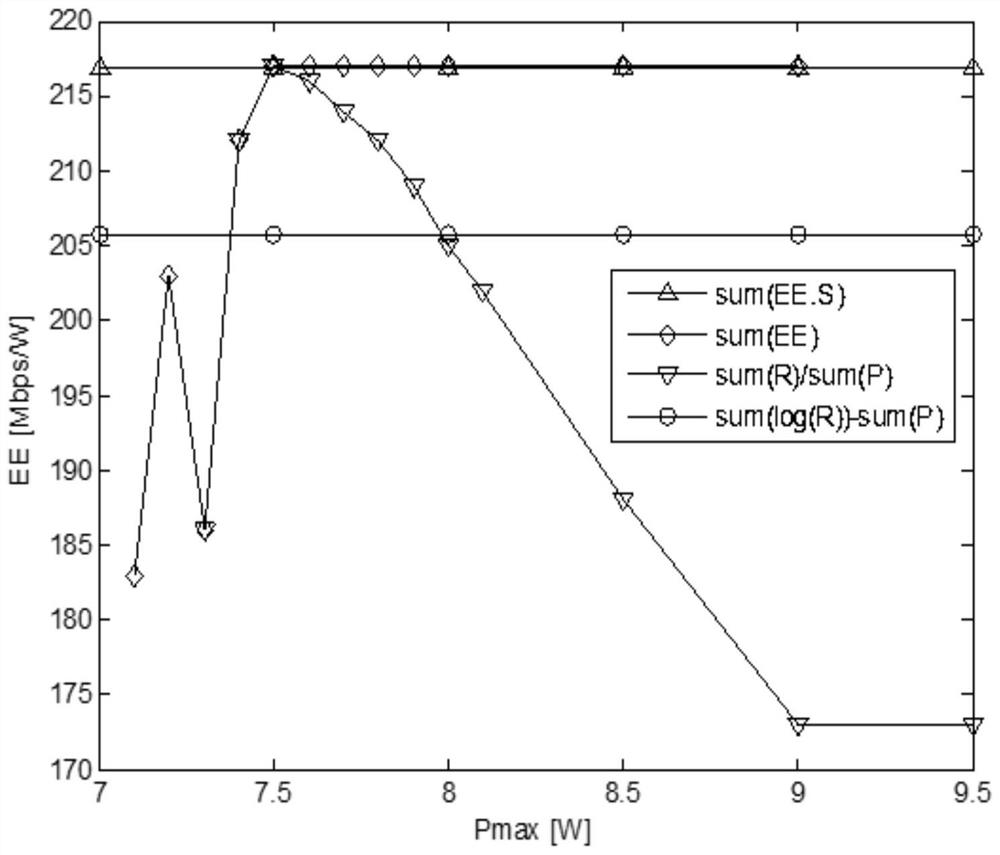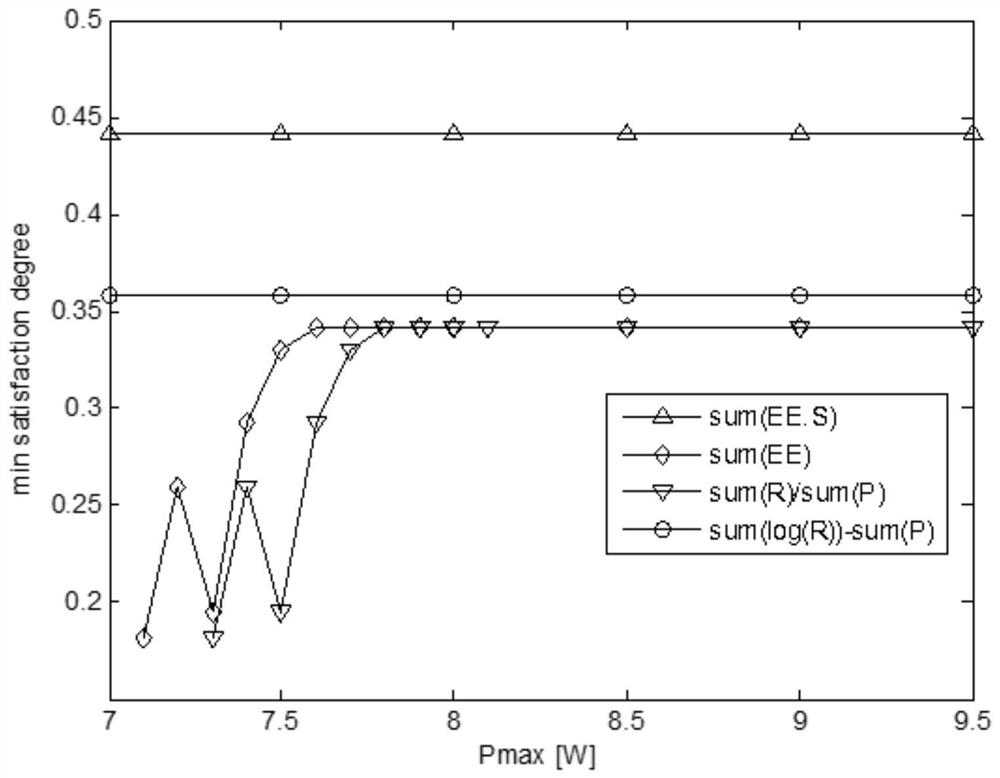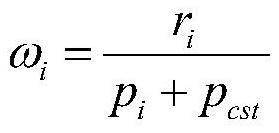Power Allocation Method Based on User-side Demand Energy Efficiency
A technology of energy efficiency and distribution method, applied in the direction of energy consumption reduction, advanced technology, climate sustainability, etc., can solve problems affecting user service quality, user satisfaction decline, etc., achieve flexible power allocation, meet user needs, and solve problems Under-considered effects
- Summary
- Abstract
- Description
- Claims
- Application Information
AI Technical Summary
Problems solved by technology
Method used
Image
Examples
Embodiment Construction
[0041] Below in conjunction with accompanying drawing and example, describe technical scheme of the present invention in detail:
[0042] In this example, set the number of users N=5; the channel bandwidth B=10M; the maximum total transmission power pmax ≤5W; Channel parameter G=[30 20 15 10 5]; Expected rate R thr =[10 15 20 30 50] Mbps; the lead channel interference ratio matrix is
[0043]
[0044] Link fixed power consumption p cst = 0.2W.
[0045] Specific steps are as follows:
[0046] Step 1: Enter the initial parameter settings, and convert the original problem according to the damped Newton architecture and the Lagrange multiplier method;
[0047] Step 2: Calculate relevant parameters respectively according to the formula (10), and obtain the mathematical expression of the quasi-water injection problem;
[0048] Step 3: According to the formula (12), the update value of the power allocation vector p is obtained by the water injection algorithm
[0049] Step 4:...
PUM
 Login to View More
Login to View More Abstract
Description
Claims
Application Information
 Login to View More
Login to View More - R&D
- Intellectual Property
- Life Sciences
- Materials
- Tech Scout
- Unparalleled Data Quality
- Higher Quality Content
- 60% Fewer Hallucinations
Browse by: Latest US Patents, China's latest patents, Technical Efficacy Thesaurus, Application Domain, Technology Topic, Popular Technical Reports.
© 2025 PatSnap. All rights reserved.Legal|Privacy policy|Modern Slavery Act Transparency Statement|Sitemap|About US| Contact US: help@patsnap.com



